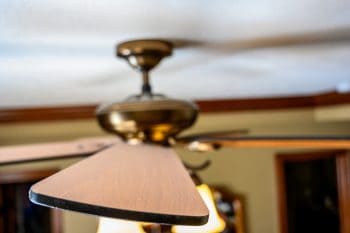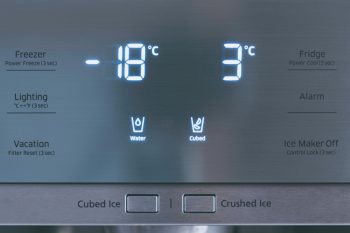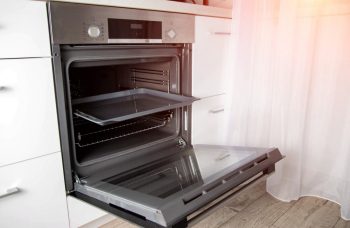
Vacuum cleaners are a staple in most households, and for a good reason. They help keep our living spaces clean and free from dust and allergens. However, like any other appliance, they can sometimes develop issues and start making unusual noises. One of the most common issues is a high-pitched noise. But why does this happen, and how can you fix it? Let’s delve into this issue and explore the causes, solutions, and preventive measures.
A high-pitched noise from your vacuum cleaner is typically a sign of an issue with airflow or the vacuum’s components. This could be due to an airflow obstruction caused by debris, belt issues, vacuum leaks, dry bearings, torn or damaged parts, incorrectly fitted parts, incorrect vacuum height setting, a full dust bin, or cracks in the vacuum frame. You can troubleshoot these issues by checking the vacuum’s components, cleaning filters, examining the hose, and checking the brush roll. If the noise persists, consider seeking professional repair. Regular maintenance can help prevent these issues.
Common Causes of a High-Pitched Noise in Vacuum Cleaners
A high-pitched noise from your vacuum cleaner usually indicates an issue with airflow or the vacuum’s components. Here are the most common reasons:
- Airflow Obstruction: A high-pitched noise often indicates an airflow blockage, which can be caused by debris trapped in the hose or other parts of the vacuum.
- Belt Issues: A worn-out or damaged belt can cause a squealing noise. If the belt is loose, frayed, or damaged, it may need to be replaced.
- Vacuum Leak: An air leak in the hoses or fittings can lead to high-pitched noises. Check all hoses and fittings for leaks.
- Dry Bearings: If the bearings are not lubricated, they can start making a high-pitched noise. Lubricate all moving parts with a lubricant such as WD-40.
- Torn or Damaged Parts: Parts such as U-bends and diaphragms can become torn and cause the vacuum cleaner to make a high-pitched noise. Damaged parts need to be replaced.
- Incorrectly Fitted Parts: If some parts are not fitted correctly, they can cause the vacuum cleaner to make a high-pitched noise. Check all parts and ensure they are properly installed and tightened.
- Vacuum Height Setting: A high-pitched noise or squealing sound may be due to a high setting on your vacuum cleaner. Adjust the vacuum cleaner to the correct height for the type of carpet or floor you are cleaning.
- Full Dust Bin: An overflowing or packed dust bin may lead to a shrill noise as the vacuum can’t fit any more debris inside. Check your dust container and make sure it is entirely empty.
- Cracks in the Vacuum Frame: Older vacuums may develop cracks in their plastic frame, compromising the suction and causing a high-pitched noise.
How to Troubleshoot a Noisy Vacuum
Here are some steps you can take to troubleshoot a noisy vacuum safely:
- Unplug the Vacuum Cleaner: Always ensure the vacuum is unplugged before performing any maintenance or troubleshooting tasks.
- Check the Bag or Dirt Cup: An overfilled dirt bag or dirt cup can cause the motor to spin faster and create more noise. Replace the bag or empty the dirt cup if necessary.
- Inspect and Clean Filters: Clogged filters can contribute to increased noise. Clean or replace the filters as needed, following the manufacturer’s recommendations.
- Examine the Hose: A clogged hose can cause the vacuum to produce loud noises. Remove any blockages by pushing a straightened coat hanger or similar object through the hose several times.
- Check the Brush Roll: Hair and fibers can sometimes get tangled around the brush roll, causing noise. Clean the brush roll by removing any debris or tangled fibers.
- Inspect the Belt: A worn or damaged belt can cause the vacuum to make loud noises. Replace the belt if necessary, following the manufacturer’s instructions.
- Look for Air Leaks: Air leaks can cause the vacuum to produce loud noises. Seal any leaks with silicone tape or a similar material if possible.
If the vacuum is still noisy after following these steps, consider taking it to a professional for repair.
Professional Repair Options
If your vacuum is making a high-pitched noise, it’s best to seek professional repair options. You can search for vacuum repair services near you on websites like Yelp, Thumbtack, and Yellow Pages. Remember to read reviews and compare services before choosing a repair shop to ensure you receive the best service for your vacuum.
Preventive Maintenance
To avoid issues with your vacuum cleaner, it’s crucial to perform regular maintenance. This includes emptying the dustbin, cleaning filters, and checking for blockages in the hose and brush roll. Proper maintenance will help prolong the life of your vacuum cleaner and minimize the chances of encountering problems.
By understanding the causes of a high-pitched noise in your vacuum and knowing how to troubleshoot and prevent these issues, you can ensure your vacuum cleaner remains in top working condition. If the noise persists despite these preventive measures, consider consulting a professional or the vacuum’s manufacturer for further assistance.
Frequently Asked Questions
How often should I replace the vacuum cleaner’s belt?
The frequency of replacing your vacuum cleaner’s belt depends on usage and the specific model of your vacuum, but generally, it is recommended to replace it every 6 to 12 months.
Is it necessary to clean the vacuum filter, and how often should I do it?
Yes, cleaning the vacuum filter is crucial for maintaining its efficiency. The frequency of cleaning depends on your usage and the vacuum model, but a good rule of thumb is to clean it every 3 to 6 months. However, always check the manufacturer’s instructions for specific guidance.
Can I use any lubricant for the vacuum’s bearings?
Not all lubricants are suitable for vacuum cleaners. It’s best to use a lubricant recommended by the vacuum’s manufacturer. If no specific recommendation is provided, a general-purpose lubricant like WD-40 is often suitable.
What should I do if the vacuum’s frame has cracks?
If the vacuum’s frame has cracks, it’s best to seek professional help. Small cracks might be repairable, but in some cases, you might need to replace the vacuum.
How do I know if the vacuum height setting is correct?
The correct vacuum height setting depends on the type of surface you’re cleaning. For low pile carpets, use a lower setting. For hard floors or high pile carpets, use a higher setting. If your vacuum is making a high-pitched noise or if it’s difficult to push, you may need to adjust the height setting.
Can I use any type of tape to seal air leaks in the vacuum?
Silicone tape is usually the best option for sealing air leaks in a vacuum as it’s durable and resistant to heat. However, in a pinch, you could use duct tape or electrical tape. Always ensure the tape is securely applied and check regularly for any signs of wear.












